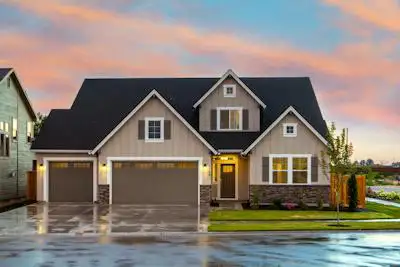Fear not, intrepid homeowner! This guide is here to illuminate the path. We'll delve into the most common roofing materials, dissecting their strengths, weaknesses, and everything in between. By the end, you'll be equipped to make an informed decision, ensuring your roof remains a sturdy testament to your comfort and safety.
The Contenders:
1.Asphalt Shingles: The reigning champions of affordability and ubiquity, asphalt shingles rule the American landscape. Composed of fiberglass or organic mats impregnated with asphalt and coated with mineral granules, they come in a dizzying array of styles and colors.
Pros:
Budget-friendly: The most cost-effective option, making them ideal for budget-conscious homeowners.
Easy to install and repair: Widely available and familiar to contractors, installation and repairs are typically straightforward.
Versatility: Adaptable to various roof shapes and pitches.
Cons:
Shorter lifespan: Compared to other materials, asphalt shingles typically last 15-30 years before needing replacement.
Vulnerable to weather: Prone to wind damage, hailstorms, and extreme temperatures.
Lower energy efficiency: Offers minimal insulation, potentially impacting energy bills.
2.Metal Roofing: Picture a sleek, stylish suit of armor for your home. Metal roofing, available in aluminum, steel, copper, and zinc, offers unmatched longevity and resilience.
Pros:
Durability: Boasts a lifespan of 40-70 years, often withstanding harsh weather conditions like hail and heavy snow.
Low maintenance: Requires minimal upkeep, saving you time and money.
Energy efficiency: Reflects heat, potentially reducing cooling costs in hot climates.
Fire-resistant: Adds an extra layer of safety against fire hazards.
Cons:
Higher initial cost: The upfront investment can be significantly higher than other options.
Noise: Rain and hail can produce noticeable clattering sounds.
Installation expertise: Requires specialized skills for proper installation.
3.Clay and Concrete Tiles: Evocative of Mediterranean villas and Tuscan charm, clay and concrete tiles exude timeless elegance and undeniable durability.
Pros:
Longevity: Clay tiles can last centuries, while concrete tiles boast a lifespan of 50-70 years.
Fireproof and weatherproof: Impervious to flames, wind, and hail.
Energy efficiency: Excellent insulators, potentially reducing energy costs.
Aesthetics: Adds a unique and eye-catching element to your home's exterior.
Cons:
Heavyweight: Requires robust roof framing to support the significant weight.
High cost: Among the most expensive roofing options.
Susceptible to breakage: Clay tiles can crack or chip, requiring repairs.
4.Slate Roofing: The epitome of luxury and sophistication, slate roofs are the undisputed heavyweight champions of durability and beauty.
Pros:
Unmatched lifespan: Can last for hundreds of years with proper care.
Natural beauty: Offers a unique and timeless aesthetic appeal.
Durability: Impervious to fire, wind, hail, and virtually any weather condition.
Low maintenance: Requires minimal upkeep.
Cons:
Prohibitively expensive: The most costly roofing option by far.
Heavyweight: Requires significant structural support.
Installation expertise: Demands specialized skills and knowledge.
5.Alternative Options: For the environmentally conscious or aesthetically adventurous, a handful of alternative materials offer unique benefits.
Green Roofs: Covered in vegetation, these roofs provide insulation, improve air quality, and create a habitat for wildlife.
Concrete Shingles: Mimic the look of slate or clay at a lower cost and weight.
Composite Shingles: Combine the durability of metal with the affordability of asphalt.
Choosing the Champion:
So, which material reigns supreme for your home? The answer, like most things in life, isn't a simple one-size-fits-all. Consider these factors:
Budget: Asphalt shingles and metal roofing offer affordability, while clay, slate, and green roofs demand a heftier investment.
Climate: Metal and slate excel in harsh weather conditions, while asphalt shingles may struggle in extreme temperatures.
Roof pitch: Some materials, like metal, are more suitable for steeper roofs.

